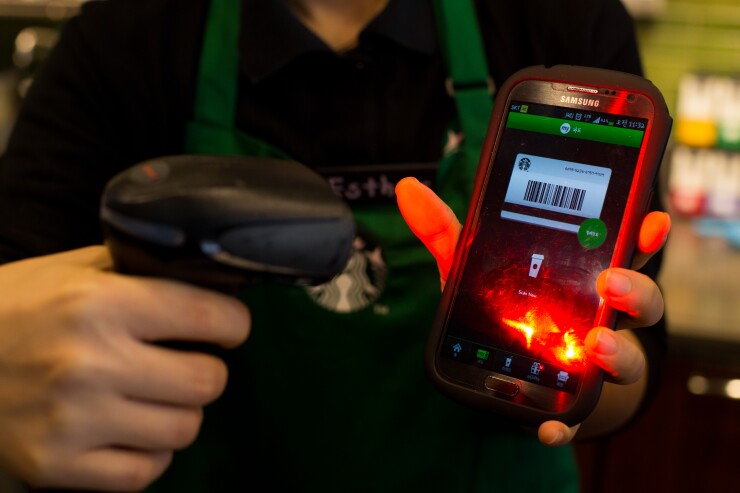Each day, more consumers use digital methods, such as online and mobile wallet, to transact.
These payment methods empower consumers to trade their wallets for cell phones or a keyboard, making it easier than ever to pay bills, split a check or buy your morning coffee.
But just how far along are we in this digital transformation? According to
To realize a cashless society, we need to grow transactions through methods, such as online and mobile wallet, that cannot be substituted for cash.
Here’s how that can be achieved.
As rapid technological changes in B-to-B and B-to-C transactions are transforming the nature of payments, new opportunities are being created for several different industries. A prime example is retail, where major changes in the space to both bank-to-consumer and bank-to-business relationships have shaken the industry to its core.

In particular, the proliferation of mobile wallets has changed the way people interact with their favorite brands. By generating brand-specific apps, companies like Starbucks create a direct revenue stream for consumers to make in-store purchases via their mobile wallet.
Retailers can further entice potential customers through loyalty and rewards programs or other mobile-only goodies; this invariably generates a brand ecosystem that encourages frequent interactions. With more interactions comes higher purchase frequencies and a stable revenue stream that didn’t exist ten years ago. A boon for B-to-C companies, cashless presents a unique opportunity to connect with your community and encourage purchasing decisions within a controlled user experience.
As for B-to-B payments, there is absolutely pressure for cash to flow more freely. B-to-B payments have been cashless for some time, but innovation has been slower than in the B-to-C space. Thankfully, the increased competition among banks generally has increased pressure to improve the efficiency of B-to-B payments. And with that increased efficiency comes a high standard for security and better potential for increased growth.
The idea of a cashless society is enticing, but it begs one question: why hasn’t it already happened?
The concept has been a talking point since the introduction of credit cards in the 1950’s, but there are still barriers that hinder a full transition to automation and cashless transactions. Chief among these concerns are the current lack of cost-effective standards, concerns surrounding transparency and fear of a GDP slowdown. These variables have been moving targets for years and historically tend to prevent faster adoption.
However, there are certainly positive developments that signal improved steps toward adoption:
Banks are partnering with or acquiring fintechs and their innovative technologies to accelerate adoption. Merging the clout of a big bank with the ingenuity of a nimble fintech can only help expedite integration of new tools that can push us closer to a cashless system.
Open API initiatives are working to facilitate instant payments by allowing for a more white label approach to developing secure and seamless mobile payment.
While these technological innovations lay out a path toward more cashless transactions, they do come with increased complexity requirements to banks’ IT infrastructure. The transition and adoption of new infrastructure can be cost-prohibitive for smaller financial institutions and hugely pricey for larger banks that need to overhaul expansive organizations.
Despite these hurdles, it’s undeniable that we are moving closer to a cashless society than ever before. Card-based payments, P-to-P, mobile and a whole slew of other transaction mediums have ushered in a world where cash could soon be an antiquated form of payment. These changes could occur earlier than many think.
That said, while digital money is certainly making strides it’s still imperative to understand that there is a place in today’s society for physical cash to fill in the gaps. According to the Federal Reserve Bank of San Francisco, in 2015, 32% of consumer transactions were made with cash, compared with 40% in 2012. The speed at which this change comes to fruition is still dependent on the environment financial institutions operate in.
While a cashless economy is not exactly a new phenomenon by any stretch, the technological innovations over this past decade have significantly accelerated a society-wide transformation. Large financial institutions are challenged every day by smaller, more nimble competitors that have quickly adopted a cashless ideology; the pressure to adapt continues to grow.
To truly thrive in this fast-moving environment banks need to leverage new technologies that allow more efficient and instantaneous processes. Streamlining digital transactions will not only increase growth and revenue projections, but provide a more user-friendly environment for potential customers.





